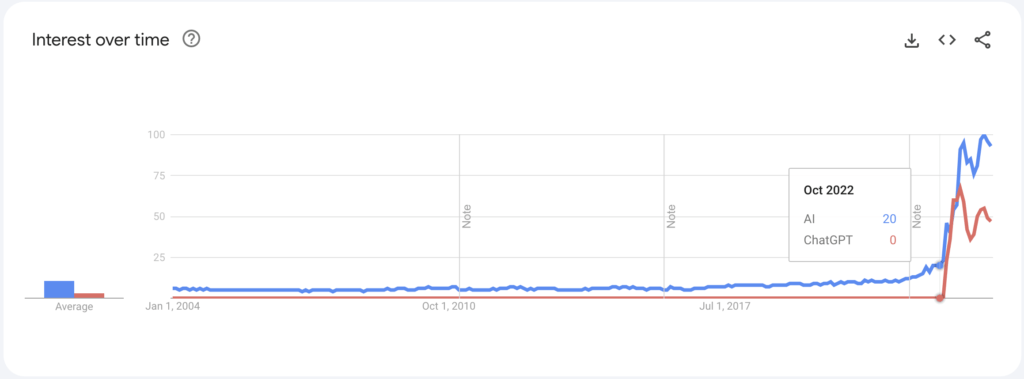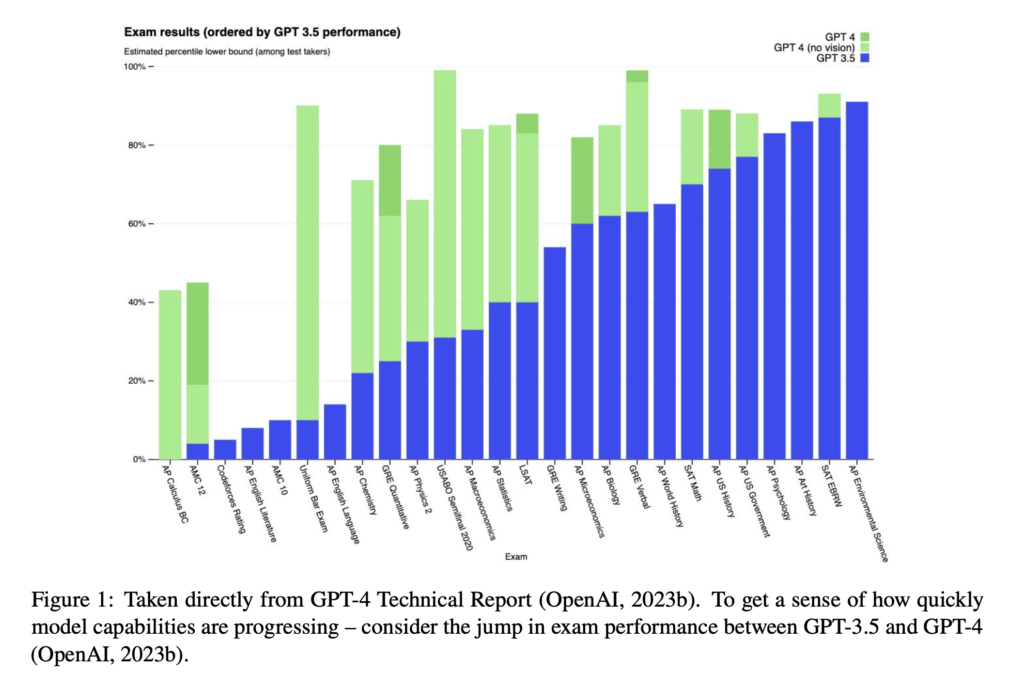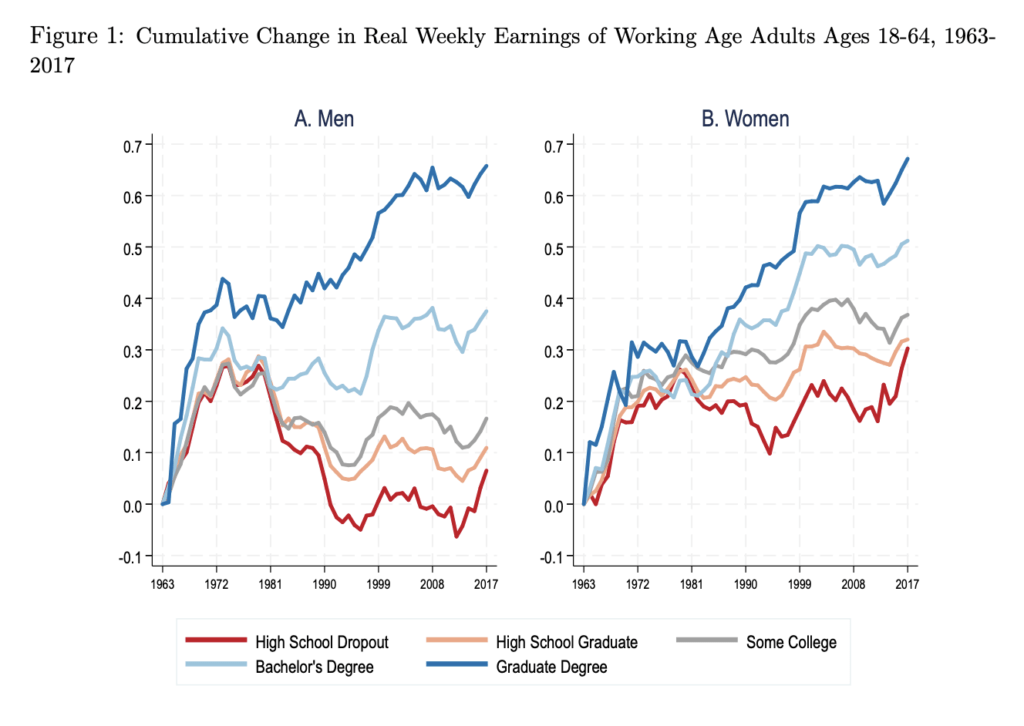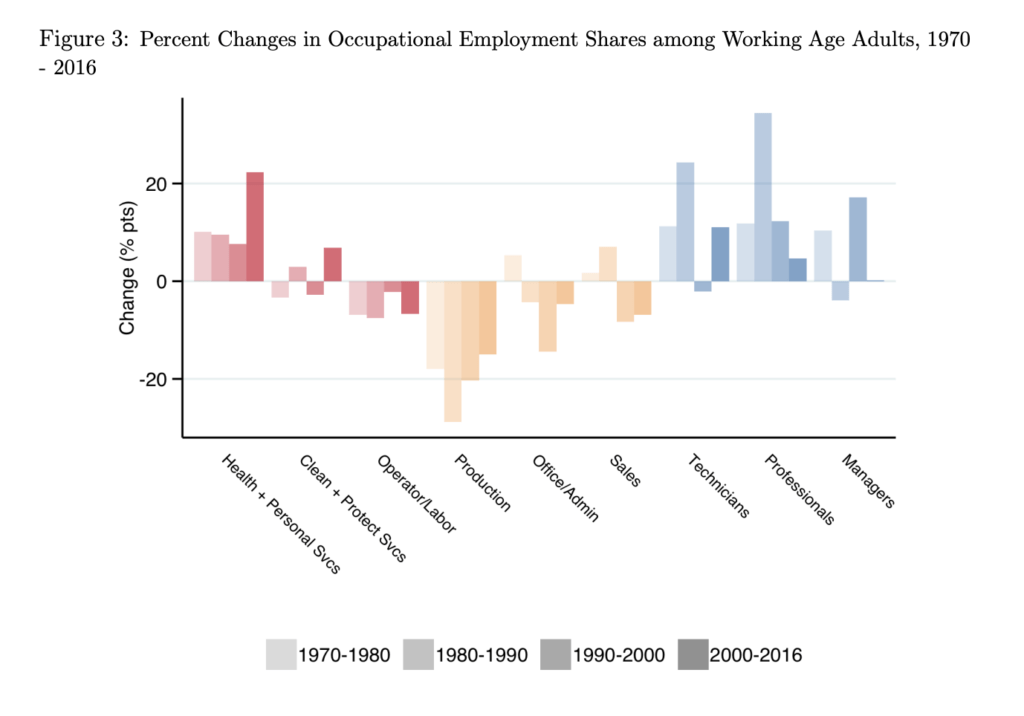How will ChatGPT affect the U.S. labor market in 2024 and beyond? The explosively popular generative AI chatbot was launched about 14 months ago (in November 2022). Below, I stand on the shoulders of academic research that has empirically assessed ChatGPT’s impact on jobs to answer the key question: Is ChatGPT more labor-displacing or labor-augmenting?
ChatGPT as a GPT (General Purpose Technology)
If you polled most economists in October 2022 and asked what GPT stands for, the most common answer would be “General Purpose Technology” (GPT). Examples of such economic GPTs include the steam engine, electricity, and the computer. Economic historians consider these transformative technologies as only coming a few times per century. Ironically, in November 2022, a potential GPT may have been launched sharing the same acronym: ChatGPT.
ChatGPT (Generative Pre-training Transformer) was an immediate sensation when it launched in November 2022. Within two months, it reached 100 million users. Google Trends data shows the meteoric rise in searches using the term, from 0 in October 2022 to exceeding the number of searches for the phrase “AI” in early 2023. A year later, AI searches have nearly quintupled.

Mirroring the rise in awareness of ChatGPT has been the anxiety among many professionals that AI could automate away their jobs. People can’t stop talking about ChatGPT – and worrying about its effects on the labor market. ChatGPT’s ability to absorb vast amounts of information and write coherent, detailed answers is, frankly, astonishing to most observers. Below is the performance of GPT version 3.5 (in the blue) and version 4 (in the green) across a battery of college- and graduate-level standardized tests. GPT 4.0 passed the bar exam. ChatGPT was built with GPT version 3.0; It’s about to become more accurate.

So, are these fears valid? How will the increasing use of generative AI, and specifically ChatGPT, impact employment and the overall labor landscape in 2024 and beyond? To answer that, we have to look back on traditional GPTs and asses how the technology has impacted the labor market.
The effects of automation: Displacement vs. Reinstatement
In “Automation and New Tasks: How Technology Displaces and Reinstates Labor,” Daron Acemoglu and Pascual Restrepo present a model to understand how automation affects the labor market by both displacing and reinstating various types of tasks performed by workers.
The displacement effect is pure automation that enables capital (in this case, technology) to substitute for labor. This process tends to lead to declines in employment levels and wages for workers. An example of displacement is the mechanization of agriculture, the replacement of skilled artisans with textile mills, or the reduced need for bank tellers because of ATMs.
Separately, there can be productivity effects from technology that enables workers to do current tasks more efficiently, such that capital is a complement to labor, and possibly increases demand for it. Tools are examples of the productivity effect, as they make existing human labor more effective – a hammer in construction, spreadsheet software in accounting, and an MRI machine in medicine.
The key outcome of the task model is that, in addition to pure automation and augmentation, technology can introduce new tasks, contributing to the diversification and expansion of job functions. Hence the “reinstatement” effect.
Yes, ChatGPT could displace routine cognitive jobs (copyeditors and online tutors, for example), augment non-routine cognitive jobs (software developers using GitHub Copilot, lawyers doing discovery), and yet reinstate new jobs (openings for prompt engineers).
The “lump of labor” fallacy – that there’s a fixed amount of work to be done in the economy – is clearly wrong with respect to macroeconomics. But it’s also wrong because work – the set of tasks that need doing – is constantly being reinvented. “More than 60% of jobs done in the United States in 2018 had not yet been ‘invented’ in 1940,” David Autor writes in recent paper.
Impact of Automation on the U.S. Labor Market
Technological shifts impact not only instances of labor but also the quality of the work. From 1980 through 2017, according to MIT economist David Autor, the U.S. labor market saw real earnings for men with less than a college degree decline sharply. For women, real wages barely rose at all. Workers with a bachelor’s or graduate degree were the only subgroups of either sex with a noticeable rise in pay.

Deconstructing the change in occupational employment shows a “barbell” shape: job growth has been concentrated at the low- and high-skill of the earnings spectrum, while middle-skill occupations (like those in manufacturing or office administration) declined sharply. It is estimated that 50 to 70% of the relative wage declines in recent decades is attributable to rapid automation.

The rise of the Centaur Worker
Conventional wisdom at the start of 2024 is that ChatGPT poses a greater threat to displace knowledge-intensive occupations, or so-called “white-collar” workers. But a more nuanced treatment should explore the potential for a symbiotic relationship between AI tools like ChatGPT and human workers in a labor-augmenting capacity – what I dub “Centaurs.”

Let us return to the original question: Is ChatGPT going to be labor-displacing or labor-augmenting?
Four key studies may help shed light on the question. First, Noy and Zhang’s experiment involved participants tasked with writing essays, divided into two groups. One group used generative AI, while the other worked solo. The main conclusion of the study was that the AI-assisted group completed essays 25% faster than the non-AI group while maintaining similar quality.
In the second, Sida Peng and team analyzed data from GitHub – a platform that allows developers to share, edit, and store their code – repositories to study how software developers used GitHub Copilot, an AI-powered coding assistant.They found developers using GitHub Copilot experienced a 42% increase in code completion speed and a 25% reduction in errors compared to those not using the tool.
The third study analyzed the potential labor market impact of GPT-3 on developers – and supports the labor displacement theory. found that, on average, one GPT-3 developer can potentially replace approximately 21 developers or content creators, signifying a potential significant labor displacement effect. However, they also noted that the emergence of new tasks and roles may create new job opportunities, with an estimated 2.7 new job postings per displaced worker. (I would submit that both of these estimates have too high magnitude, but are directionally correct.)
Fourth, Brynjolfsson’s paper examined the introduction of a generative AI-based conversational assistant to over 5,000 customer support agents. The use of the AI tool led to a 14% average increase in productivity (issues resolved per hour), with a notably higher 34% improvement for novice and low-skilled workers, but minimal impact on experienced, high-skilled workers. The results suggest that the AI model effectively disseminates best practices among workers and assists less experienced workers in quickly advancing their skills.
Taken as a whole, these initial studies indicate that ChatGPT does not seem to be a labor-displacing tool. Instead, it seems to be a labor-augmenting tool that will spur the creation of “Centaur workers.” Centaur workers are half-AI, half-human workers that harmonize human expertise with AI capabilities. ChatGPT can assist professionals in tasks such as research, content creation and problem-solving, leading to increased efficiency and productivity (in fact, this sentence was written by ChatGPT). Written communication and research can be teed up by ChatGPT, while creative brainstorming and decision-making can be done by humans.
If this holds, ChatGPT could mitigate inequality trends, expanding expertise down the skill distribution, offering workers with less formal education the capabilities to communicate (and learn) more effectively, and possibly have more fun on the job.
Conclusion
ChatGPT is designed to assist human decision-making (read, productivity) rather than replace it. In doing so, it will spawn a new type of worker and likely reduce economic inequality. By combining human creativity and intuition with AI efficiency, these new Centaur workers will become more than the sum of their parts. Just like in chess, where the best human players are easily beaten by a chess AI engine, but when a grandmaster and chess engine join forces, the hybrid teams exceed the capabilities of the best chess AI engines alone. Simply put: ChatGPT has greater potential to enhance jobs rather than eliminate jobs.
But technology does not exist in a vacuum. Through democratic politics and wise policies, we can harvest the good from AI. These good sides are numerous: automation of unwanted work, human-augmenting tools, assisting with aging societies, etc. But negative consequences are also possible: loss of income from labor displacement, accelerated inequality, knowledge attrition, etc. We need to balance the productivity boost of AI (good) versus the potential for distributional harms (bad).
Adopting a balanced regulatory approach to ChatGPT and similar generative AI chatbots is essential for fostering innovation and realizing the potential of Centaur workers. By acknowledging these tools as labor-augmenting rather than labor-displacing, we can harness the collaborative power of human-AI partnerships to boost productivity across various industries, ensuring a prosperous and adaptive future for the evolving workforce.







